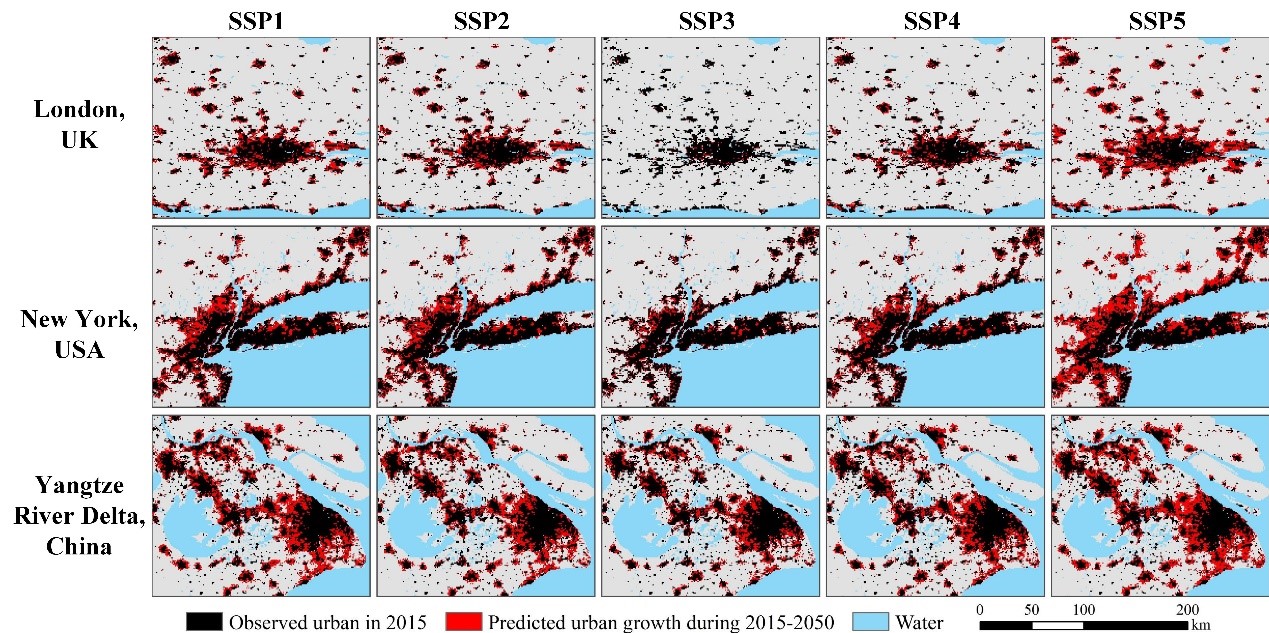
Geographical Simulation and Optimization System (GeoSOS)
Urban areas, as places of significance and hives of human activity, play an important role even though they occupy only a small proportion of total land surface. Small changes in urban areas, in the form of urban expansion, exert a profound impact on biodiversity conservation and on cycles of water, carbon, aerosols, and nitrogen in the climate system at a local and global scale.
Recently, The Shared Socioeconomic Pathways (SSPs) were adopted by the Coupled Model Intercomparison Project Phase 6 (CMIP6), enabling researchers to conduct unified, comparable multi-scenario simulations and integrate such simulation products into climate change research. The SSPs focus on the key socio-economic factors including demographic dynamics, economic development, technological change, social, cultural, and institutional changes and policies.
A scenario-based simulation of future urban land-use changes provides an important tool to assess the impact of human activity on the environment. This study creates a global urban land-use simulation product with 1-km resolution based on the SSPs for the period 2015 to 2100 to do just that. The objective is to enable the assessment of different scenarios of future urban expansion and their related impacts on a global scale under the latest recognized SSP scenarios. For public use, this product is now available for free download.


Global urban land-use change product at 1-km resolution for 2015 to 2100 based on the SSP scenarios are available to download in: Here
Guangzhao Chen, Xia Li, Xiaoping Liu et al. Global urban change and its environmental effects under the shared socioeconomic pathways.
If you have any comments and suggestions, please contact Prof. Xia Li: lixia@geo.ecnu.edu.cn
Last updated: 15 June, 2018